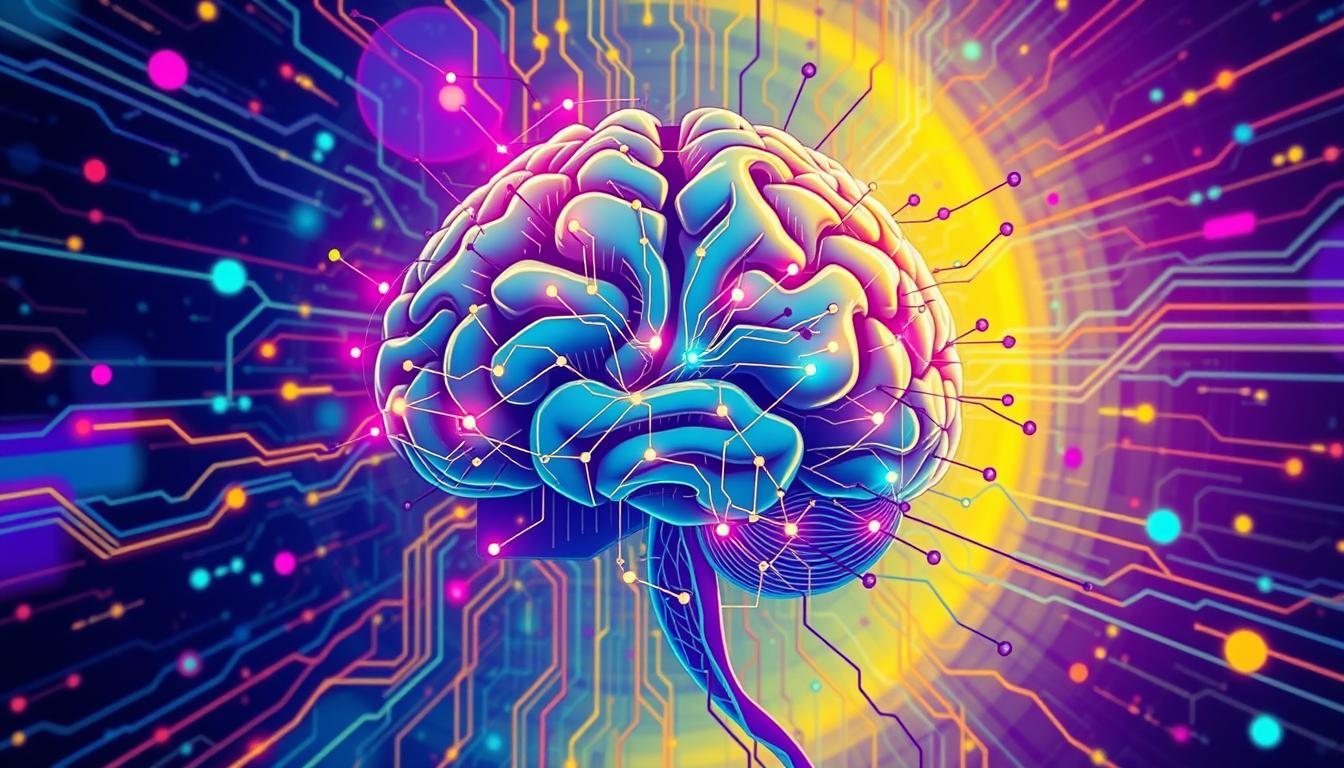Did you know that algorithmic thinking is key to many big tech breakthroughs1? It’s a way to tackle big problems by breaking them down into smaller parts. This skill is vital for anyone interested in computer science, programming, and STEM fields1.
But algorithmic thinking isn’t just for techies. It’s useful in many areas, like education, data analysis, and even robotics1. It helps improve your critical thinking, logic, and problem-solving skills. These skills are useful in many parts of life1.
If you’re a student, a future developer, or just want to get better at solving problems, learning about algorithmic thinking can be a game-changer2. This guide will show you the basics of this powerful way of thinking. You’ll learn about its key parts, what makes it special, and how it helps solve problems in a systematic way1.
Key Takeaways
- Algorithmic thinking is a systematic approach to problem-solving that involves breaking down complex problems into smaller, more manageable parts.
- It is a key component of computational thinking, aiding in logical and efficient problem-solving.
- Algorithmic thinking is essential in computer science, programming, and STEM fields, but it is also valuable in various other disciplines.
- Algorithmic thinking helps develop critical thinking, logic, and problem-solving skills that are beneficial for personal and professional success.
- Algorithmic thinking concepts and activities can be introduced at an early age through worksheets and resources.
Understanding the Fundamentals of Algorithmic Thinking
Algorithmic thinking is key to solving problems. It breaks down big issues into smaller parts. It finds patterns and creates step-by-step solutions3.
At its core, algorithmic thinking has three main parts. These are definiteness, collectiveness, and sequentiality3.
Core Components of Algorithmic Process
The algorithmic process has three main parts. It explores problems, finds patterns, and creates solutions3. This method helps solve big challenges by breaking them down into simple steps3.
Key Characteristics of Algorithmic Solutions
Good algorithmic solutions are clear and precise. They follow a logical order, with each step leading to the next3. They also need to be repeatable for solving many problems3.
Basic Principles of Systematic Problem-Solving
Algorithmic thinking is all about solving problems in a systematic way. It breaks down big issues into smaller parts. It finds patterns and creates step-by-step solutions3.
By following these principles, people can improve their problem-solving skills. They can face big challenges with confidence and efficiency3.
| Characteristic | Description |
|---|---|
| Definiteness | Algorithmic solutions must have clear, unambiguous steps that can be followed precisely. |
| Collectiveness | Algorithms work collectively as a set of instructions to solve a problem, not as individual steps. |
| Sequentiality | Algorithmic solutions follow a specific order, with each step building upon the previous one. |
The Importance of Algorithmic Thinking in Modern World
Algorithmic thinking is now a key skill in our tech-driven world4. With over 1.5 billion websites online, knowing how to create efficient algorithms is critical. This skill is needed for everything from improving search engines to making learning systems better4.
Algorithmic thinking is more than just coding. It helps solve problems, make decisions, and plan strategies in many fields5. It teaches us to tackle big problems by breaking them down into smaller steps. This boosts our critical thinking, efficiency, and success in solving problems5.
In schools, teaching algorithmic thinking is now a big part of learning4. Learning.com, started in 1999, offers online lessons for K-12 students. These lessons cover topics like coding and problem-solving4. By teaching these skills, schools prepare students for a world driven by technology5.
As technology advances, so will the need for algorithmic thinking5. Learning this skill opens doors to many areas, from data analysis to robotics4. By embracing algorithmic thinking, we can drive innovation and personal growth in the future5.
| Algorithmic Thinking Key Attributes | Benefits |
|---|---|
| Critical Thinking | Enhances the ability to analyze problems holistically and come up with creative solutions |
| Problem-Solving | Provides a structured approach to break down complex tasks into manageable steps |
| Efficiency | Promotes logical and efficient methods for finding solutions |
| Perseverance | Encourages students to iterate and refine their solutions, developing resilience |
| Communication | Enables clear and logical expression of ideas, enriching collaboration |
In conclusion, algorithmic thinking is vital in today’s world. As technology evolves, this skill becomes more valuable. By using this approach, we can achieve great things in many areas.
Breaking Down Complex Problems: The Decomposition Method
Algorithmic thinking helps solve big problems by breaking them down into smaller parts6. This method, known as problem decomposition, is key to finding good solutions and improving analytical skills6. It lets people handle tough issues by breaking them into simpler steps.
Steps in Problem Decomposition
- Define the problem: Clearly state the goals, limits, and what you want to achieve6.
- Identify subproblems: Split the main problem into smaller parts that are easier to solve6.
- Organize subproblems: Put the subproblems in order, showing how they connect6.
- Develop solutions: Find solutions for each part, then combine them into a full solution6.
Identifying Subproblems and Components
Finding the main parts and subproblems of a problem is key7. This involves understanding the problem well, recognizing patterns, and knowing the problem area7. By focusing on what’s important and ignoring the rest, you can get a clear picture of the problem.
Creating Manageable Solution Paths
Once the problem is broken down, it’s time to find solutions for each part6. You might use whiteboards or other tools to organize your work6. By trying out these solutions and testing them, you can make your approach better and solve the problem effectively6.

“Decomposing complex problems into smaller, more manageable parts is the key to unlocking effective solutions and honing analytical thinking skills.”
Pattern Recognition and Abstraction Skills
Algorithmic thinking is key to solving problems. It includes skills like pattern recognition and abstraction. These skills help find solutions to complex challenges8.
Pattern recognition helps spot trends and similarities in data. It’s used to make smart decisions and find new solutions9. For example, in detective games, it’s vital for solving mysteries9.
Abstraction focuses on the main parts of a problem, ignoring the rest8. It simplifies complex issues and finds general solutions. In school timetable making, it helps create efficient schedules9.
Mastering these skills makes solving problems easier. They’re useful in computer science, business, and everyday life8.
In today’s data-driven world, these skills are more important than ever10. Educators are working to teach these skills in schools. This helps students solve complex problems with confidence10.
| Computational Thinking Skill | Description | Example Application |
|---|---|---|
| Pattern Recognition | Identifying recurring elements, similarities, and trends in data or information. | Solving a detective mystery by recognizing patterns in clues. |
| Abstraction | Removing non-essential details and focusing on the core elements of a problem or concept. | Efficiently creating a school timetable by focusing on the essential components and constraints. |
Developing these skills boosts problem-solving abilities. They help tackle complex challenges with ease and creativity8. As technology advances, these skills will remain essential for solving future problems8.
Algorithmic Thinking, Algorithmic Thinking Concepts
Algorithmic thinking is all about solving problems step by step. It involves creating a series of clear steps to find a solution. This method, called algorithm design, is key to solving problems in the digital world11.
Essential Elements of Algorithm Design
Good algorithm design focuses on a few important things. These include controlling loops, making choices, and managing data. Learning these helps people solve complex problems in a logical and efficient way11.
Building Blocks of Computational Thinking
At the core of algorithmic thinking are the basics of computational thinking. These include breaking down big problems, spotting patterns, and creating solutions. These skills help people tackle complex issues in a structured way11.
Logic Implementation Strategies
Using algorithmic thinking well means applying logic and structure. This might involve using methods like Fibonacci sequences or data compression. These strategies are based on the principles of algorithmic thinking1112.
FAQ
What is algorithmic thinking?
Algorithmic thinking is a way to solve problems by breaking them down into smaller steps. It uses logic and critical thinking to find efficient solutions. This method requires defining the problem clearly, analyzing it systematically, and then implementing the solution.
What are the fundamental aspects of algorithmic thinking?
Algorithmic thinking is based on collectiveness, definiteness, and sequentiality. It involves exploring problems, finding patterns, and creating systematic solutions. Each algorithm needs clear steps, precise instructions, and logical decisions to reach the desired outcome.
Why is algorithmic thinking important?
Algorithmic thinking is key in computer science, programming, and STEM fields. It’s vital for data analysis, machine learning, robotics, and operating systems. It also helps in education and professional success in tech industries.
How does algorithmic thinking involve breaking down problems?
Algorithmic thinking breaks down problems into smaller parts. It involves understanding the problem’s constraints, setting goals, and organizing sub-problems logically. This makes complex challenges easier to solve.
What role does pattern recognition play in algorithmic thinking?
Algorithmic thinking focuses on finding patterns in data and similarities between sub-problems. It removes unnecessary details and focuses on the essential parts. Recognizing patterns is key to solving problems efficiently.
What are the key elements of algorithmic solutions?
Algorithmic thinking involves systematic procedures with finite steps for solving problems. It includes managing variables, controlling iterations, and making selections. It emphasizes logical operations and a structured approach to solving problems.
Source Links
- What is Algorithmic Thinking? A Beginner’s Guide – https://teachyourkidscode.com/what-is-algorithmic-thinking/
- Algorithmic Thinking: How to Master This Essential Skill – https://learntocodewith.me/posts/algorithmic-thinking/
- Definitions of Computational Thinking, Algorithmic Thinking & Design Thinking – https://www.learning.com/blog/defining-computational-algorithmic-design-thinking/
- Algorithmic Thinking Examples in Everyday Life | Learning.com – https://www.learning.com/blog/examples-of-algorithmic-thinking/
- Why is Algorithmic Thinking Important for Students? | Learning.com – https://www.learning.com/blog/algorithmic-thinking-student-skills/
- Algorithmic Thinking: The Art of solving complex Problems – https://medium.com/wayra-germany/algorithmic-thinking-the-art-of-solving-complex-problems-2747756c823
- What is computational thinking? – University of York – https://online.york.ac.uk/what-is-computational-thinking/
- Computational Thinking Definition | Learning.com – https://www.learning.com/blog/defining-computational-thinking/
- Computational Thinking: Meaning, Techniques & Examples – https://www.vaia.com/en-us/explanations/computer-science/problem-solving-techniques/computational-thinking/
- Launching Computational Thinking Routines for K-5 ELA – Digital Promise – https://digitalpromise.org/2024/08/29/launching-computational-thinking-routines-for-k-5-ela/
- Algorithmic Thinking – https://teachinglondoncomputing.org/resources/developing-computational-thinking/algorithmic-thinking/
- Algorithmic Thinking (Part 2) – https://www.coursera.org/learn/algorithmic-thinking-2










